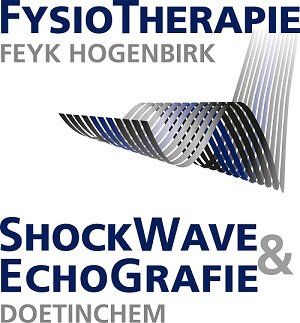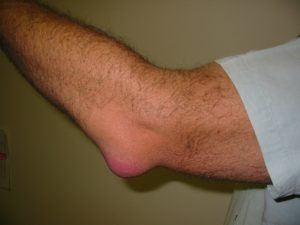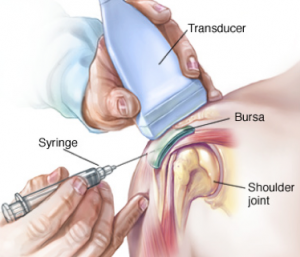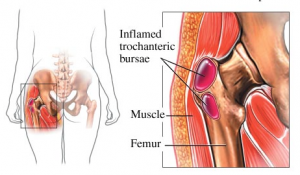Bursitis
What exactly is bursitis?
Causes of bursitis
You can get bursitis for various reasons.
- Due to an accident: Due to a fall or a blow to your shoulder, for example, the bursa can become irritated and inflamed. Inflammation: If a joint is inflamed, this inflammation can spread to the bursa. You often see this with gout. If the bursa itself is damaged, such as due to an accident, a bacteria in the bursa can cause an additional infection. Overload: Repeating certain movements too often can cause bursitis. You also see this together with RSI. Another form is the ''student's elbow''; by leaning on the elbow a lot, the bursa can become inflamed.
In some professions and in some sports you see certain forms of bursitis occurring more often: in runners: bursitis in the Achilles tendon. This is often accompanied by inflammation of the tendons (tendinitis). Hip bursitis is also a common runner's injury. Among pavers and carpet layers you see the so-called 'Paters knee'. This is an inflammation of the bursa at the front of the knee. Carpenters and masons are more likely to develop elbow bursitis.
Symptoms of bursitis
Symptoms of bursitis of the shoulder
Causes of hip bursitis?
Bursitis of the hip usually occurs due to repeated or prolonged activities that strain the trochanteric bursa. This pain is usually felt during prolonged lying (in a side-lying position, mainly on a hard surface, such as on a thin mattress in a caravan or trailer tent!), walking (mainly uphill or on an irregular surface), jumping, squatting and lunges. These activities affect trochanteric bursitis via the gluteal muscles or via direct pressure/impact on the bursa. In some cases, this injury can occur acutely, for example after a kick or fall on the hip.
What factors can contribute to the development of this injury?
There are several factors that predispose individuals to developing this condition. These factors are determined and corrected by the physiotherapist. Some of these factors include:
- Joint stiffness (mainly around the hip) Shortened muscles (mainly the glutes) Too much or incorrect load Muscle weakness (mainly the hamstrings and glutes) Inadequate warm-up Poor biomechanics (leg length difference, foot position, for example) Inadequate rehabilitation after a previous gluteal and /or hip injuryPoor pelvic or core stability
What are the symptoms?
People with trochanteric bursitis experience pain on the outside of the hip. This pain can also radiate to the outside of the thigh up to the knee. In less severe cases, individuals experience only stiffness and mild pain in the hip that increases during rest after activity. Activities that cause pain include: excessive lying (side-lying), running, jumping, excessive walking, sitting with the legs crossed and getting in and out of the car. The pain associated with bursa inflammation warms up with activity in the initial stages of the injury.
If the injury has been present for a longer period of time, the pattern of complaints may change. The pain becomes sharper or additional complaints occur during sports or activities. Pain also increases when pressure is placed on the hip bursa. In some cases, one experiences weakness of the leg. This weakness mainly occurs when walking up stairs, performing a squat, or when trying to accelerate while running.
How is the diagnosis made?
The anamnesis (history) in combination with a clinical examination by the physiotherapist, supplemented with ultrasound diagnostics, is usually sufficient to arrive at the diagnosis of 'bursitis'. Further research, such as an MRI scan, CT scan, RX scan, is sometimes necessary to confirm the diagnosis.
Shockwave for bursa inflammation of the hip
A relatively new and very effective treatment method is our High Energy ESWT Shockwave therapy, the ideal solution for conditions such as bursitis of the hip. The therapy is relatively painless, affordable and effective. Many have already gone before you and got rid of their bursitis.
Make an appointment?
Do you want to know more? Please feel free to contact us for an Intake and Ultrasound. We are happy to tell you everything you want and need to know about our Shockwave therapy.
ADDRESS
Physiotherapy Feyk Hogenbirk
Gezellenlaan 21
7005 AX Doetinchem
(Free parking)
T 0314 394 222
M 0653669587
info@fysiotherapiedoetinchem.com
OPENING HOURS
- Monday
- -
- Tuesday
- -
- Wednesday
- -
- Thursday
- -
- Friday
- -
- Saturday
- Appointment only
- Sunday
- Appointment only
All rights reserved | Disclaimer | Privacy | Website by Internet agency Doetinchem FrankBrinks.nl







